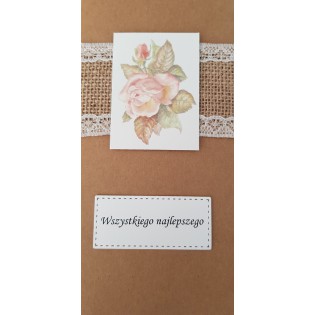No products
Categories
-
Women Jewellery
-
earrings
- Ore
-
Stone
- Opal
- Crystal Earrings
- Malachite
- Shell Earrings
- Spinel Earrings
- Topaz
- Lapis lazuli
- Uleksyt
- Turquoise
- Sapphire
- Swarovski
- Ruby
- Pearl
- Kamienie naturalne
- Noc kairu
- Pearls
- marcasite
- Coral
- Kamień księżycowy
- Gemstone
- Without Stones
- rhinestones
- Amethyst
- Agate
- Amber
- Grenade
- Onyks
- Cyrkonia
- Beaded Earrings
- Perły
- Tansanit
- citrine
- EARMUFFS
- Motywy
-
Silver Pendants for women
- Ore
-
Stone
- without Stones
- Agate
- Amethyst
- Amber
- Chrysocolla
- Cubic Zirconia
- Charoite
- Garnets
- natural stones
- Precious Gemstones
- Moonstone
- Coral
- Striped Flint
- Quartz
- Malachite
- marcasite
- mother of pearl
- Cairo Night
- Onyks
- Opal
- Pearls
- Rubin
- Seraphinite
- Swarovski
- Sapphire
- Glass
- Emerald Pendants
- Tiffany
- Topaz
- Turquoise
- Tiger's Eye
- Ulexite
- citrine pendants
- motives
- Sets
-
Rings
- Rings for joining
- Elegant Metal Rings Collection
-
Gemstone Rings
- Bez kamienia
- Agate Rings Collection
- Bursztyn
- Ceramic Rings
- Cubic Zirconia Rings
- Garnet Rings
- Natural Stone Rings
- Gemstone Rings
- moonstone necklaces
- Rose Quartz Rings
- Labradorite
- Mother of Pearl Rings
- Shell Rings
- Onyx Rings
- Opal Rings
- Prahnite Rings
- Topaz Rings
- Turquoise Rings
- Ulexite Rings
- citrine stone
- infinity
-
Necklaces
- Precious Metal Necklaces
- Celebrity jewellery
-
Necklaces with Gemstones
- Stoneless Silver Necklaces
- Agate Stone Necklaces
- Aquamarine Necklaces
- Amethyst Necklaces
- Amber Necklaces
- Cubic Zirconia
- Garnet Necklaces
- Hematite
- Natural Stone Necklaces
- Kamień jubilerski
- Koral
- Beaded Necklaces
- Kryształ
- Kwarc dymny
- Lapis lazuli
- Malachite Necklaces
- Masa perłowa
- Shell Necklaces
- Onyks
- Opal
- Perły
- Spinele
- Swarovski
- Szafir
- Turkus
- Turmalin
- infinity
-
Bracelets
- Kruszec
- Kamień
- Bransoletki na nogę
- BRANSOLETKI MODUŁOWE, CHARMSY
- infinity
- Silver Chains & Necklaces Online
- Brooches
- Chaplet for Women Online
- Women's watches
- GIFT VOUCHER
- ENGRAVING JEWELRY
-
earrings
- KARTKI RĘCZNIE ROBIONE
- devotional articles
- PROFESSIONAL CARE OF JEWELERY
- original silver gift
- Children's Jewelry
- Men's Jewelry
- BIŻUTERIA ZŁOTA
- COLLECTIONS
- KOSMETYKI Z BURSZTYNEM
- infinity
- Bursztyn
Viewed products
Saint Icon RITY - patrons of difficult and hopeless cases
316.3
- Write a review
This product is no longer in stock
SAINT ICON RITY - Patrons of difficult and hopeless cases
Icon size: 24 cm / 11 cm
Saint Rita is one of the most popular saints in the world. Rita was born around 1380 in Roccaporena, near Cascia, Italy. According to the application, she was to be a child prayed for by pious parents. At Baptism she received the name Małgorzata. Even as a young girl she felt a call to religious life. At the age of fourteen, obedient to the insistence of her parents, she married Paweł Ferdinando Mancini a young, refined but endowed with a rather restless nature. Two sons are born from this marriage. However, this relationship was very unsuccessful. Softening her husband's difficult character, she survived eighteen years with him. Her marriage required a lot of effort, because her husband had a violent character and quite adventurous passion. Rita bore her fate with angelic patience. Rita's husband was killed killed in the mob's case. When he died, the sons decided to avenge him, and Rita, as a mother, suffered not being able to talk them out of it. Fearing that they would not continue fighting, she asked God to take them out of the world rather than become killers. God heard that request. Both young men died during the epidemic and she struggled to reconcile feuding families. When she finally made her enemies friends, she could become a nun.
At the age of thirty, she joined the Augustinian Order in Cascia as a widow. She had dreamed of it since childhood, but the circumstances were such that she still had to do something different. God was still giving her other tasks. She was a wife, mother, widow, and only then became a nun. Thanks to this, all states can ask her for support in prayer today - she will understand everyone. Life in the monastery was not idyllic. Because she was illiterate, she was admitted to the "converters" who were intended for daily ministry in the monastery. With all the joy of love for the Bridegroom she performed the lowest services in the monastery. Often during the day and night she kissed the religious ring with love, which symbolized her mystical marriage with Jesus.
She had a special devotion to God's Passion. She was seen more than once as she lay on the cross, in tears. One day, when a preacher had a sermon about the Lord's Passion, she prayed for Jesus to give her the taste of at least one thorn that hurt his holy head. She was heard. During the prayer she suddenly felt a strong prick in her head. In this place a painful wound formed, which caused her unbearable suffering for 15 years, until her death. However, to avoid sensation, Rita asked Christ to hide the wound, but to keep suffering. It also happened. To this day, you can see on the forehead, Rita's well-preserved body, a trace of this wound. Rita was distinguished by obedience, a spirit of prayer and patience. Being a simple and uneducated person, she reached the height of contemplation. She died on May 22, 1457.
The cult of Saint Rita began with her death. Miracles have not ceased to multiply: healing and conversion. A village carpenter reported about one of the first. He could no longer practice because of the paralysis and deformity of the hand.
He called for the intercession of Saint. Rita exposed on a death bed. He promised that if he regained power in his hands, he would make a casket for her. As soon as he finished his prayer, he found that his hand had regained freedom of movement, and he actually made a casket in which the body was laid. Three days after the death of St. Rita's number of miracles increased steadily. Time passed and the deceased had to be buried. However, her body remained intact and still gave off a beautiful scent. It was decided to keep them in the chapel, under the altar. And he was never laid in the ground. Almost two centuries later, Urban VIII sat on the Petrine capital. One of his nieces, interested in Rita's life and fame, convinced of her holiness, went to Rome to present this matter for detailed investigation. The Pope set up a commission. With a body that had not been damaged for 170 years, still emitting a beautiful smell, and after examining the files stating numerous miracles, attributed to Rita's intercession, and the reports of the commission were so favorable that Urban VIII signed a decree on the beatification in 1628. Pope Leo XIII canonized it on 24 May 1900, designating her feast for May 22.
The symbol that accompanies Rita is a rose, reminding of the roses she received during the last winter of her life. These roses, both today and then, are for Rita a sign of God's love, mercy and forgiveness. St. Rita is the patron of difficult and hopeless cases.
Your eye won't catch it, but it will recognize your heart. You are in a circle of icons just like in a circle of God's inexhaustible love, tender, tender and full of kindness. The icon is a sign of God's immense grace for you. Feel the man to whom God comes in his infinite kindness - in the Saint. Let true trust embrace you. Receive in silence, listen in, wait, expect - desire, desire - keep silent ...
This hand-made icon is a copy of the original Byzantine icon. It is made on linen canvas stuck into wood.
The woven background is made of gold powder.





